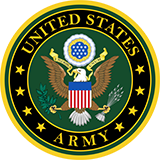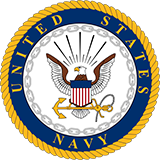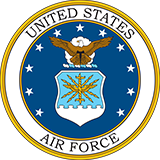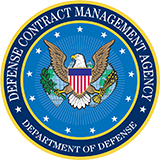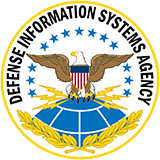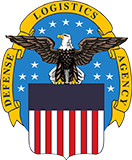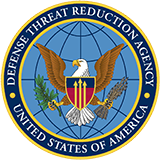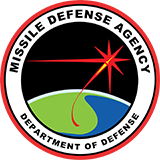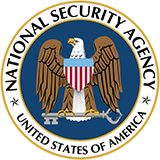Incorporated
Policy changes from this SAMM E-Change memo have been incorporated into the SAMM.

DEFENSE SECURITY COOPERATION AGENCY
2800 DEFENSE PENTAGON
WASHINGTON, D.C. 20301-2800
9/16/2024
MEMORANDUM FOR :
DEPUTY UNDER SECRETARY OF THE AIR FORCE FOR INTERNATIONAL AFFAIRS
DEPUTY ASSISTANT SECRETARY OF THE ARMY FOR DEFENSE EXPORTS AND COOPERATION
DEPUTY ASSISTANT SECRETARY OF THE NAVY FOR INTERNATIONAL PROGRAMS
DIRECTOR, DEFENSE CONTRACT MANAGEMENT AGENCY
DIRECTOR, DEFENSE INFORMATION SYSTEMS AGENCY
DIRECTOR, DEFENSE LOGISTICS AGENCY
DIRECTOR, DEFENSE THREAT REDUCTION AGENCY
DIRECTOR, MISSILE DEFENSE AGENCY
DIRECTOR, NATIONAL GEOSPATIAL-INTELLIGENCE AGENCY
DIRECTOR, SECURITY COOPERATION ACCOUNTING DIRECTORATE, DEFENSE FINANCE AND ACCOUNTING SERVICE, INDIANAPOLIS OPERATIONS
DIRECTOR OF CYBERSECURITY DIRECTORATE AND DEPUTY NATIONAL MANAGER FOR NATIONAL SECURITY SYSTEMS, NATIONAL SECURITY AGENCY
SUBJECT :
Defense Security Cooperation Agency Policy Memorandum 24-02, Updates to Chapter 1 - Implementing Agencies' Authorities, Roles, and Responsibilities [SAMM E-Change 680]
Effective immediately, Security Assistance Management Manual (SAMM) Chapter 1 is updated to provide current information on authorities, roles, and responsibilities for the Military Departments and Implementing Agencies in executing security cooperation activities. The policy in the attachment is incorporated into the DSCA Security Assistance Management Manual (SAMM) at https://samm.dsca.mil/.
If you have any questions concerning this guidance, please contact DSCA (Office of Strategy, Plans, and Policy/Execution Policy and Analysis Directorate (SPP/EPA)), dsca.ncr.spp.mbx.epa@mail.mil.
David Ferrari
Assistant Director
Strategy, Plans, and Policy
ATTACHMENT :
SAMM E-Change 680 - Updates to Chapter 1 - Implementing Agencies' Roles, Responsibilities and Authorities
Attachment: Security Assistance Management Manual E-Change 680
Updates to Chapter 1 - Implementing Agencies' Roles, Responsibilities, and Authorities
1) Update C1.3. section title to:
2) Update C1.3.2.6. to the following, delete C1.3.2.7.-C1.3.2.8., and renumber the remaining sections of C1.3.2. appropriately:
C1.3.2.6. Implementing Agencies. An Implementing Agency (IA) is the MILDEP organization (See Table C1.T1.) or defense agency (See Table C5.T2b.) responsible for the execution of SC programs. The IA is responsible for the overall management of actions for delivery of the materiel, supporting equipment, or services set forth in the SC programs and activities being provided to a foreign partner. In coordination with State, the Office of Under Secretary of Defense for Policy (OUSD(P)) and DSCA, for all matters affecting or related to the respective department's or agency's support to the Combatant Commanders (CCDRs) concerning SC, IAs serve as advisors to the Secretary of Defense. IAs provide, either through sales, grant, or lease, defense articles and defense services, including training, and provide International Military Education and Training (IMET) on a grant basis, to eligible foreign partners in accordance with policies and criteria established by State, the Office of the Secretary of Defense (OSD) and the Director, DSCA. IAs provide the technical information and other data, upon request, on weapons systems, tactics, doctrine, training, capabilities, logistic support, price, source, availability, and lead-time for developing and reviewing SC programs. IAs maintain appropriate records and furnish prescribed reports as requested. IAs provide qualified military and civilian personnel to carry out SC assignments according to approved tables of distribution and other authorizations, directives, and requests. Directives that govern IAs ensure conformance with technology transfer, classified military information release, and disclosure policies for their respective areas of responsibility while conducting SC activities. IAs also assist the Office of the Under Secretary of Defense for Acquisition and Sustainment (OUSD(A&S)) and the Director, DSCA, as requested, in government-to-government or interdepartmental discussions or negotiations involving SC. See Table C5.T2a. and Table C5.T2b. for a list of DoD organizations designated as IAs and/or organizations authorized to receive and action Letters of Request (LORs) for SA, and memoranda of request (MORs) for the other SC programs. See Chapter 15 for the MOR process.
C1.3.2.6.1. The Military Departments. In addition to authorizing organizations as IAs, with duties as described in Section C1.3.2.6., the MILDEPs also conduct international armaments cooperation with eligible partner nations and international organizations in accordance with policies and criteria established by State and the OUSD(A&S). MILDEPs also authorize certain other organizations to carry out SC duties at the direction of the IAs. The following MILDEP organizations lead their respective departments as IAs in support of the SC mission:
Table C1.T1. Military Department Implementing Agencies
MILDEP | IA |
|---|---|
Department of the Army (DA) | Office of the Deputy Assistant Secretary of the Army for Defense Exports and Cooperation (DASA (DE&C)) |
Department of the Navy (DoN) | Navy International Programs Office (NIPO) |
Department of the Air Force (DAF) | Deputy Under Secretary of the Air Force for International Affairs (SAF/IA) |
C1.3.2.6.1.1. The Department of the Army.
C1.3.2.6.1.1.1. Authorities. DA's delegation of authority to fulfill the responsibilities related to SC is derived from DoD Directive (DoDD) 5132.03 and as directed by the Secretary of the Army (SECARMY). In accordance with Headquarters, DA (HQDA) General Order 2020-01, Assistant Secretary of the Army (Acquisition, Logistics and Technology) (ASA (ALT)) is responsible for SC and other related activities and general export matters. Army Regulation (AR) 12-1, Security Assistance, Training, and Export Policy, delegates responsibilities from the ASA (ALT) to DASA (DE&C) for select SC programs and activities.
C1.3.2.6.1.1.2. Roles. DA develops allied and partner defense and security capabilities and capacity for self-defense and multinational operations. The ASA (ALT) is the single office in HQDA responsible for setting the strategic direction for and overseeing DA policies and programs related to acquisition, logistics, technology, procurement, intellectual property, the industrial base, and SC not otherwise delegated (including security assistance and armaments cooperation). Subject to the authority, direction, and control of the ASA (ALT), the DASA (DE&C) is delegated responsibility for select SC activities. The DASA (DE&C), as the Army implementing agency, works closely with two Army Commands and one Direct Report Unit (DRU): U.S. Army Material Command (AMC), U.S. Army Training and Doctrine Command (TRADOC), and U.S. Army Corps of Engineers (USACE) as a DRU to HQDA.
C1.3.2.6.1.1.3. Responsibilities. The DASA (DE&C) leads, manages, resources, and directs assigned elements of the Army's global SC activities, including policy and strategy, for Foreign Military Sales (FMS), foreign military and foreign national training and education, international armaments cooperation, non-special access program (SAP) technology transfer, and export policy. The DASA (DE&C) ensures that all ASA (ALT) managed SC programs are conducted according to law and policy and has direct tasking authority over the Army's designated commands for the execution of their delegated SC responsibilities. DA has three designated commands responsible for collaborating, synchronizing, and integrating pre-LOR/MOR, case development, and execution efforts. These commands are authorized to receive and respond to requests for information, pre-LOR/MOR requests, and LORs/MORs. U.S. Army Security Assistance Command (USASAC), under AMC, is responsible for approved SC, materiel programs (including defense articles and services, non-institutional training, and technical assistance). Security Assistance Training Field Activity (SATFA), under TRADOC, is responsible for approved SC institutional training, exercises, and continental U.S. (CONUS) non-institutional travel and living allowance (TLA) support. USACE is responsible for approved SC (design, engineering, and construction of infrastructure and facilities) executed through FMS. The Program Executive Officers (PEOs) and Program Managers (PMs) are responsible for supporting the development and execution of approved FMS cases.
C1.3.2.6.1.2. The Department of the Navy.
C1.3.2.6.1.2.1. Authorities. NIPO manages DoN SC programs, including T10 BPC and international agreements, as authorized by the Foreign Assistance Act (FAA), the Arms Export Control Act (AECA), the DoDD 5132.03, and various authorization and appropriation acts. This authority includes managing participation in some international efforts by DoN organizational entities with SC responsibilities.
C1.3.2.6.1.2.2. Roles. The DoN advances global maritime alliances and partnerships by championing exportability and the transfer of capabilities supporting strategic security interests. NIPO, under the Assistant Secretary of the Navy (Research, Development, and Acquisition) (ASN (RDA)), is the principal office for developing, implementing, and managing DoN international programs and policies concerning research, development, acquisition, military training, and technology transfer for DoN. NIPO oversees programs providing in-service support, comparative test and evaluation, procurement efforts, personnel exchange, export licensing and exemptions, foreign disclosure, and international technology transfer. Program Management Offices (PMOs) perform Case Administering Office (CAO) functions, and Program Executive Offices (PEOs) manage and execute SC programs within the structure of System Commands (SYSCOMs).
C1.3.2.6.1.2.3. Responsibilities. NIPO is responsible for receipt and tasking of requests for information, Pre-LOR/MOR activities, and LORs/MORs to the SYSCOMS and other organizations as required to develop, coordinate, negotiate, conclude international acquisition agreements and arrangements, and international armaments cooperation agreements. This includes foreign military financing, grant aid, and IMET. NIPO is also the IA responsible for implementing U.S. Coast Guard (USCG) and some U.S. Marine Corps (USMC) SC programs.
C1.3.2.6.1.3. The Department of the Air Force.
C1.3.2.6.1.3.1. Authorities. The DAF manages and executes security cooperation and security assistance (SC/SA) programs under the expressed authorities of the FAA, the AECA, and applicable policies and statutes. DAF Policy Directive 16-1 implements DoDD 5132.03, DoD Policy and Responsibilities Relating to Security Cooperation, and is applicable to the United States Air Force (USAF), United States Space Force (USSF), the Regular Air Force (RegAF), the Air Force Reserve Command (AFRC), the Air National Guard (ANG), and entities under contractual obligation to abide by the terms of DAF issuances.
C1.3.2.6.1.3.2. The Secretary of the Air Force delegates responsibility for the DAF's security cooperation programs and activities to the Deputy Under Secretary of the Air Force for International Affairs (SAF/IA). SAF/IA serves as the functional synchronizer and integrator of DAF security cooperation enterprise. SAF/IA advises and supports the Office of the Secretary of the Air Force, the Office of the Air Force Chief of Staff, the Office of the Chief of Space Operations, and officials supporting USAF international activities. In addition, SAF/IA prepares and disseminates security cooperation policies, objectives, and activities in coordination with the Department of Defense, Department of State, and other department and agencies - as appropriate.
C1.3.2.6.1.3.3. Responsibilities. SAF/IA, in effort to accomplish elements the National Defense Strategy and U.S. Air Force objectives, endeavors to strengthen alliances and build mutually beneficial partnerships through a robust Security Cooperation program. U.S. Air Force Security Cooperation programs enables our allies and partners to grow air and space defense capabilities and capacity in order to operate independently, and in coalition, with U.S. forces. SAF/IA also facilitates U.S. access, basing, and overflights that underpins global reach. The DAF builds these relationships utilizing a wide range of activities, to include key leader engagement, military training and education, exercises, defense material acquisition, technology development, personnel exchanges, cooperative agreements, to include international armaments and intelligence cooperation, and defense/military contacts.
C1.3.2.6.1.3.3.1. The Department of the Air Force further delegates the following responsibilities to accomplish security cooperation objectives. Professional military education (PME), exercises, training and access to airspace and ranges is aligned under the responsibilities of the Air Education and Training Command (AETC) and Air Force Security Assistance Training Squadron (AFSAT). Material and service support to article procurement, operations, maintenance, and sustainment programs are aligned under the Air Force Materiel Command (AFMC) International Affairs (AFMC/IA), the Air Force Security Assistance and Cooperation Directorate (AFSAC) and Program Executive Offices (PEOs).
C1.3.2.6.2. Per Section C1.2.3.6., defense agencies may also be assigned as an IA. Currently, in addition to DSCA, the following defense agencies are designated as IAs:
C1.3.2.6.2.1. Defense Contract Management Agency.
C1.3.2.6.2.1.1. Authorities. The Secretary of Defense delegated the Defense Contract Management Agency (DCMA) authority in accordance with DoDD 5105.64 to communicate directly with the heads of the DoD Components, through the Secretaries of MILDEPs' designees, and representatives of foreign partners to carry out assigned SC responsibilities and functions.
C1.3.2.6.2.1.2. Roles. DCMA performs contract administration and management, quality assurance, product acceptance, and other acquisition services for the DoD, other federal agencies, and foreign partners as authorized in support of SC. DCMA also serves as a Contingency Contract Administration Services (CCAS) force provider to the military service responsible for executing the mission. DCMA prepares FMS cases for services in support of foreign partners' Direct Commercial Sales (DCS) contracts and procurements. DCMA operates under the authority, direction, and control of the USD(A&S), through the Assistant Secretary of Defense for Acquisition (ASD(A)).
C1.3.2.6.2.1.3. Responsibilities. DCMA performs Contract Administration Services (CAS) functions in accordance with the Federal Acquisition Regulation (FAR) and the Defense Federal Acquisition Regulation Supplement (DFARS). DCMA designs and manages contracting and acquisition programs and activities to improve standards of performance, economy, and efficiency for the USG and foreign partners in support of SC efforts.
C1.3.2.6.2.2. Defense Information Systems Agency
C1.3.2.6.2.2.1. Authorities. The Secretary of Defense delegated the Defense Information Systems Agency (DISA) authority in accordance with DoDD 5105.19 to carry out assigned responsibilities and functions in support of SC programs and activities.
C1.3.2.6.3.2. Roles. DISA provides, operates, and assures command and control (C2) and information-sharing capabilities in support of USG and foreign partner requirements in support of SC efforts. DISA provides a globally accessible enterprise information infrastructure across the full spectrum of military operations in direct support of SC efforts. DISA also conducts DoD Information Network (DoDIN) operations to enable lethality across all warfighting domains in defense of the United States. DISA plans, engineers, acquires, tests, fields, operates, and assures information-sharing capabilities, C2 solutions, and a global enterprise infrastructure to support defense requirements.
C1.3.2.6.2.2.3. Responsibilities. DISA supports the DoD CIO with implementation of assigned responsibilities in support of SC efforts to help achieve an information advantage and full spectrum superiority, increase mission assurance, improve mission effectiveness, and realize information technology (IT) efficiencies.
C1.3.2.6.2.3. Defense Logistics Agency.
C1.3.2.6.2.3.1. Authorities. The Secretary of Defense has delegated the Defense Logistics Agency (DLA) authority per DoDD 5105.22 to communicate with representatives of foreign partners, as appropriate, and to carry out assigned responsibilities and functions according to DoD policy in support of SC programs and activities.
C1.3.2.6.2.3.2. Roles. The Director, DLA, advises the Secretary of Defense on all SC matters impacting DLA and acts for the Secretary of Defense when responsibility is delegated. DLA prepares FMS cases for cataloging services at the DLA Logistics Information Services and Excess Defense Articles (EDA) at the DLA Disposition Services. DLA coordinates on MILDEP SC cases exclusively for medical equipment and supplies (except for U.S. Army cases prepared by U.S. Army Medical Materiel Agency (USAMMA)), clothing and textiles, subsistence, and bulk petroleum. As the item manager for consumable stock-funded secondary items, DLA supply centers work with the MILDEPs to fill requisitions, process Supply Discrepancy Reports (SDRs), process Repair & Return items, provide freight forwarder services, provide shipment consolidations for MILDEPS and foreign partners, and close cases when supply is complete. DLA functions as an integral element of the military logistics system responsible for providing effective, efficient, and risk-mitigated worldwide logistics support to the DoD under conditions of peace and war. DLA also supports other federal agencies and, when authorized by law or by agreement, State and local government organizations, foreign governments, and international organizations. DLA is under the authority, direction, and control of the USD(A&S), through the Assistant Secretary of Defense for Sustainment (ASD(Sustainment)).
C1.3.2.6.2.3.3. Responsibilities. The Director, DLA, organizes, directs, and manages DLA and all assigned resources in support of SC efforts. DLA procures assigned items and services, administers, supervises, and controls all programs, joint enabling capabilities, services, and items assigned to DLA, and provides logistics information, products, and services for authorized customers.
C1.3.2.6.2.4. Defense Threat Reduction Agency.
C1.3.2.6.2.4.1. Authorities. The Secretary of Defense has delegated the Defense Threat Reduction Agency (DTRA) authority per DoDD 5105.62 to direct, administer, and provide services to foreign partners under SA. The DSCA Director has delegated responsibility to the DTRA Director for the execution and administration of SC programs and activities to develop foreign partner capability in counter weapons of mass destruction operations as authorized by 10 U.S.C. 333.a.(2).
C1.3.2.6.2.4.2. Roles. DTRA provides cross-cutting solutions in support of SC efforts to enable the DoD, the USG, and foreign partners to deter strategic attack against the United States and its allies; prevent, reduce, and counter Weapons of Mass Destruction (WMD) and emerging threats; and prevail against WMD-armed adversaries in crisis and conflict. DTRA is both a Combat Support Agency and a Defense Agency. DTRA supports the CCMDs and the MILDEPS with both defensive and offensive capabilities, and facilitates innovation and quickly fields solutions to complex, deadly, and urgent threats. DTRA safeguards the United States and its allies from WMD threats globally under the authority, direction, and control of the USD(A&S), through the Assistant Secretary of Defense for Nuclear, Chemical, and Biological Defense Programs (ASD(NCB)).
C1.3.2.6.2.4.3. Responsibilities. DTRA supports the Commander, U.S. Special Operations Command (USSOCOM), as the lead CCDR for synchronizing DoD efforts to combat WMD in accordance with the Unified Command Plan, leveraging DTRA's planning, technical development, capabilities and needs identification, and operational expertise and capabilities required to execute Countering Weapons of Mass Destruction (CWMD) operations. DTRA prevents, reduces, and eliminates WMD threats through risk reduction, arms control, nonproliferation, partner capacity building, and warfighter support. DTRA utilizes Title 50 and Title 10 funding authorities to conduct SC programs and activities. The Title 50 Cooperative Threat Reduction (CTR) Program receives policy guidance and authorities directly from OSD and employs Title 50 CTR funds to assist foreign partners to secure, detect, interdict, and eliminate WMD and related materials through several programs. DTRA's Building Partner Capacity Department utilizes Title 10 funds to execute its SC mission. The CWMD Security Cooperation Engagement Program uses Title 10 U.S.C. 333 funds on behalf of the CCMDs and DSCA to develop foreign partner capabilities to prevent, protect, mitigate, respond, and recover from Chemical, Biological, Radiological, and Nuclear (CBRN) incidents. The International Counterproliferation Program receives policy guidance from OSD and utilizes DTRA Title 10 Operations and Maintenance (O&M) funds to build foreign partner law enforcement capacity to prevent and disrupt proliferation networks. Additionally, DTRA utilizes Title 10 O&M funds to implement the Proliferation Security Initiative, which works closely with State to organize a global effort to stop trafficking of WMD, WMD delivery systems, and related materials.
C1.3.2.6.2.5. Missile Defense Agency.
C1.3.2.6.2.5.1. Authorities. The Secretary of Defense has delegated the Missile Defense Agency (MDA) authority per DoDD 5134.09 to execute SA programs and activities, exercising original classification and foreign disclosure authority over information comprising all programs and activities of the developmental integrated Missile Defense System (MDS), including all programs and activities transferred to MDA and all other MDA-funded activities. Additionally, the Secretary of Defense has delegated MDA authority per DoDD 5134.09 to conduct international armaments cooperation with eligible partner nations and international organizations in accordance with policies and criteria established by State and the OUSD (A&S).
C1.3.2.6.2.5.2. Roles. MDA is a research, development, and acquisition agency under the authority, direction, and control of USD Research and Engineering (R&E). MDA develops, tests, and fields the integrated MDS, Terminal High Altitude Area Defense (THAAD) weapon system, to include the Army-Navy/Transportable Radar Surveillance and Control Model 2 and works closely with the CCDRs who rely on the system to defend the United States, U.S. forward-deployed forces, and foreign partners from missile attack. MDA's mission is to develop and deploy a layered MDS to defend the United States, its deployed forces, allies, and friends from missile attacks in all phases of flight.
C1.3.2.6.2.5.3. Responsibilities. USD(R&E) has delegated MDA as responsible for programmatic policy, research, and development of MDS to include SC programs and activities, assisting in the planning, development, integration, and execution of global missile defenses. This includes missile warning system and MDS architecture, experimentation, exercises, and analyses for addressing the missile defense needs of all CCDRs. MDA is responsible for the development, implementation, execution, and closure of THAAD weapon system, stand-alone FMS Cross Domain Solution, and other emerging MDS capabilities.
C1.3.2.6.2.6. National Geospatial-Intelligence Agency.
C1.3.2.6.2.6.1. Authorities. The Secretary of Defense has delegated authority to the National Geospatial-Intelligence Agency (NGA) per DoDD 5105.60 to direct, administer, and provide defense services to foreign partners under the AECA and Export Administration Regulations in support of NGA missions.
C1.3.2.6.2.6.2. Roles. NGA delivers timely, relevant, accurate, and actionable geospatial intelligence. NGA enables the U.S. intelligence community and the DoD to fulfill the president's national security priorities to protect the nation. NGA anticipates its foreign partners' future needs and advances the geospatial intelligence discipline in order to sell, grant, lease, or loan geospatial information, equipment, and services to foreign partners when such sales or assistance will enhance U.S. foreign policy or advance the NGA mission. SC programs and activities are a means by which NGA sells, grants, leases, or loans defense articles and services, including training, to international partners.
C1.3.2.6.2.6.3. Responsibilities. The NGA Director, International Operations and Partnerships (D/I) has delegated the Security Assistance Program Director (SA PD) as the agency focal point for administration and implementation of SC programs and activities. SA PD determines whether the SC program is the appropriate means of providing support to foreign partners or whether the Accommodation Procurement authority is a more suitable means of support. SA Program Managers (SA PMs) action individual SC cases.
C1.3.2.6.2.7. National Security Agency.
C1.3.2.6.2.7.1. Authorities. The Secretary of Defense has delegated the National Security Agency (NSA) authority per DoDD 5100.20 to communicate, establish contact, and maintain relationships with representatives of foreign partners or other entities in carrying out assigned responsibilities and functions. National Security Memorandum (NSM) 8 appoints the Director of NSA as the National Manager (NM) for National Security Systems (NSS) - networks that contain classified information or are otherwise critical to military and intelligence activities.
C1.3.2.6.2.7.2. Roles. NSA leads the USG in cryptology that encompasses both signals intelligence insights and cybersecurity products and services and enables computer network operations to gain a decisive advantage for the nation and its allies. NSA's mission encompasses both Signals Intelligence (SIGINT) and Cybersecurity activities. The Director, NSA/Chief, Central Security Service (CSS) (DIRNSA/CHCSS) serves as the principal SIGINT and Cybersecurity advisor to the Secretary of Defense; the Under Secretary of Defense for Intelligence and Security (USD(I&S)), the Assistant Secretary of Defense for Networks and Information Integration/DoD Chief Information Officer (ASD(NII)/DoD CIO), CJCS, the CCDRs, the Secretaries of the MILDEPs, and the Director of National Intelligence (DNI), as well as other USG officials with regard to these missions and the responsibilities enumerated herein.
C1.3.2.6.2.7.3. Responsibilities. NSA exercises oversight of intelligence coordination with foreign partners. NSA conducts liaison with foreign partners regarding SIGINT and Cybersecurity SC programs and activities, providing technical advice and support to cryptologic arrangements and conducting cryptologic exchanges as authorized. NSA exercises authority and responsibility for disclosing and releasing classified military information to foreign partners. NSA also provides appropriate policy guidance and training to personnel exercising foreign disclosure duties, coordinates SIGINT and Cybersecurity agreements and arrangements with other affected USG departments and agencies and leverages cryptologic capabilities of foreign partners with whom NSA/CSS has an established cryptologic relationship or as requested by the Secretary of Defense or DNI.

